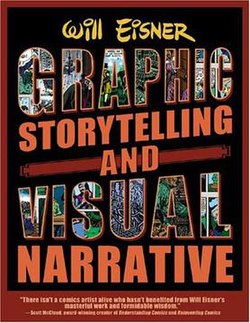 | |
| Author | Will Eisner |
|---|---|
| Illustrator | Will Eisner |
| Language | English |
| Subject | Comics |
| Publisher | Poorhouse Press North Light Books (2001 edition) W. W. Norton (2008 edition) |
Publication date | 1996; 2001; 2008 |
| Publication place | United States |
| Pages | 164 |
| ISBN | 0-393-33127-X |
| OCLC | 227191897 |
| Preceded by | Comics and Sequential Art |
Graphic Storytelling and Visual Narrative is a 1996 book by American cartoonist Will Eisner that provides a formal overview of comics. It is a companion to his earlier book Comics and Sequential Art (1985). [1]